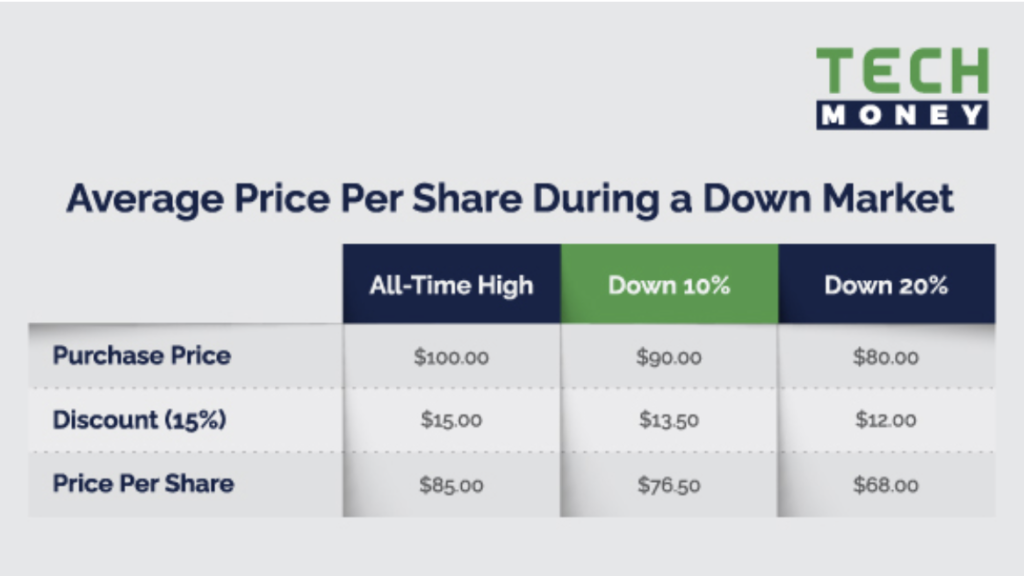For opportunistic investors, employer stock purchase plans (ESPPs) become more attractive in a bear market. This is because stocks are bought at an additional “discount” on top of the 15% price cut that is inherently built into the plan.
ESPPs are employer-sponsored investment plans that allow employees to purchase company stock at a discounted price—typically 15%. However, when a stock is in bear market territory, it means that the company’s stock price is down 20% or more from its 52-week high. This indicates that at a minimum, you could feasibly buy the stock at a 35% discount with respect to its recent trading range.
For example, if a stock is trading at a price of $100 per share, a market downturn hits, and that same stock is now trading at $80 per share, your 15% employee discount for participating in the ESPP is worth much more. You’re continuing to buy shares in a company you believe in, but now you’re getting more shares for your money.

The more popular version of an ESPP is known as a Section 423 plan. Named for the portion of the tax code it covers and the favorable taxation of the purchase discount, most company ESPPs have a lookback provision for calculating the purchase price. In essence, this provision allows the employee to purchase shares at the lowest possible price within an offering period—generally, six months.
Of course, there are always risks associated with investing in any company’s stock. However, if you are comfortable with the short-term risk that the stock could fall lower and believe in the long-term prospects of your employer, an ESPP can be a great place to deploy a few additional dollars during a bear market.
Increasing the amount you invest while the market is down can help you secure more shares at a lower price. For those with a higher-than-average risk tolerance and the financial capacity to withstand further market shocks, a bear market may be a great time to either add additional company shares to your portfolio or begin building a position in an investment from scratch.
According to a report from the National Bureau of Economic Research (NBER), most investors reinvest twice as much after experiencing a gain versus a loss. This means that employees are much more likely to load up on additional shares while their company’s stock price is at its highest levels. However, history tells us that the best time to double down and purchase additional shares in a high-quality company is when its share price is down from its recent high and other investors are scaling back—not when it’s at its peak.
Experienced investors view bear markets as an opportunity to swoop in and scoop up shares of high-quality companies that have been oversold and are now mispriced. Just think, there’s a reason why CEOs and other top executives of public companies often snatch up large portions of their company’s stock during market downturns.
It is important to note, however, that ESPPs typically require you to hold onto shares for at least six months before selling them. This means that you should only consider making an additional purchase if you have a long enough time horizon before you anticipate needing to use those funds. If you find yourself needing to sell your shares during that time period, unfortunately, you may have to sell them at a loss.
